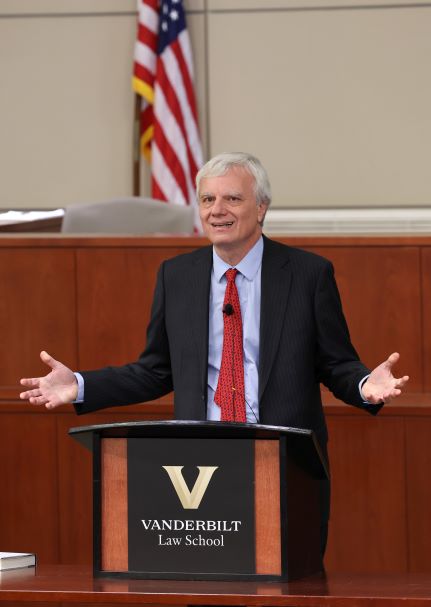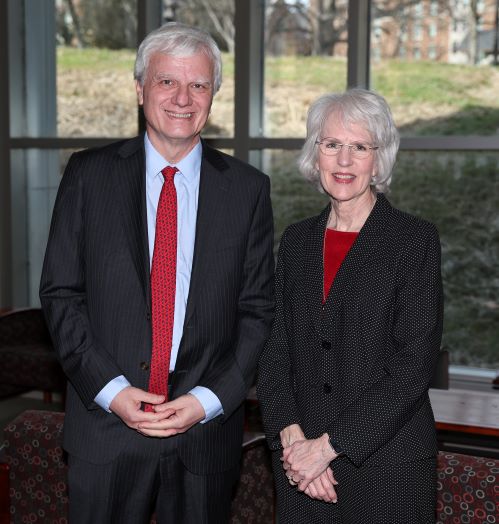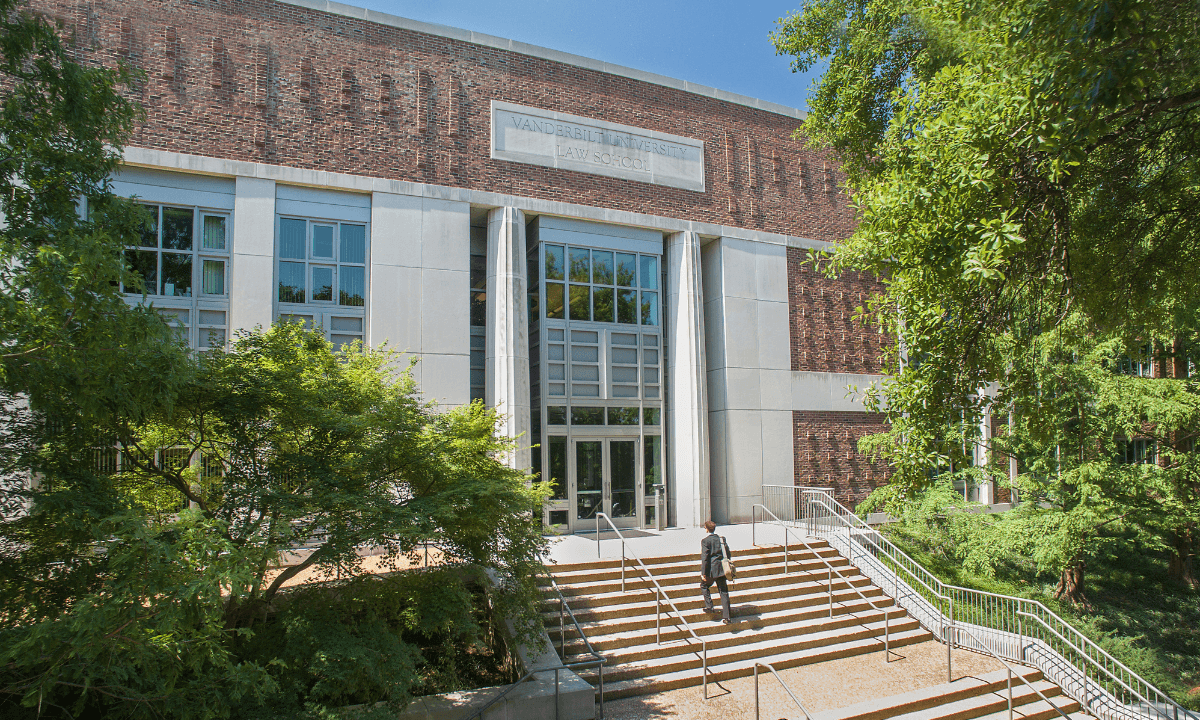John Marshall Harlan served as an associate justice of the U.S. Supreme Court from 1877 to 1911. He was the lone dissenter in Plessy v. Ferguson, which established the “separate but equal” principle; in five 1883 cases known as the Civil Rights cases, in which the Court struck down the Civil Rights Act passed in 1875; and in U.S. v. Harris, in which the court ruled that the federal government could not prosecute a Tennessee sheriff and others for conspiring to lynch four Black prisoners in Tennessee.

Journalist Peter Canellos, a graduate of the University of Pennsylvania and Columbia Law School, became fascinated with Justice Harlan because of his scathing dissent in Plessy, the infamous Supreme Court decision that ushered in the Jim Crow era.
Canellos discussed his biography, The Great Dissenter: The Story of John Marshall Harlan, America’s Judicial Hero, as part of the 2023 Branstetter Judicial Speaker Series on Feb. 21.

Four takeaways from Peter Canellos’ talk about Justice John Marshall Harlan:
- Justice Harlan’s views on civil rights, as expressed in numerous dissents, were prescient but far ahead of his time. “It took 50 years for Harlan’s dissents to become law,” Canellos said. Harlan wrote his dissents during the Gilded Age, a period of historic inequality in the United States. “The question becomes, what enabled him to see the law so differently from his contemporaries?” Canellos said.
- Harlan’s views on “equal rights under the law” grew out of a complex family history that likely included a mixed-race family member. Harlan grew up in the same Kentucky household with Robert Harlan, who had been born into slavery in Virginia but joined the household of James Harlan, Harlan’s father, at James’ invitation. Robert Harlan became a successful businessman who made a fortune during the Gold Rush and later moved to Europe after the Dred Scott decision upheld slavery in the U.S. Robert and John Harlan remained close throughout their lives. “John Harlan had seen an African American man become the most economically successful person in his family, whereas other justices on the Supreme Court believed a white supremacist narrative about Black people being less capable of managing their own affairs,” Canellos said.
- Harlan wrote his famous dissent in Plessy v. Ferguson knowing his colleagues on the Supreme Court “were never going to support Black rights,” Canellos said.
- Plessy v. Ferguson was not considered a notable case in its time and received little coverage in in the White press. But Harlan accurately predicted that “one day this case will be as infamous as Dred Scott,” and his dissent in Plessy made the front pages of Black newspapers throughout the U.S. “African Americans…immediately perceived Plessy was a terrible defeat, and within a week, they were writing about Harlan’s dissent,” Canellos said.

Canellos signed copies of “The Great Dissenter” after his lecture.
Harlan was appointed to the Supreme Court by President Rutherford B. Hayes and served 34 years, from 1871 to 1911. He wrote 123 of his 891 written opinions in dissent.

Canellos was introduced by Judge Jane Branstetter Stranch ’78 (BA’75) of the U.S. Court of Appeals for the Sixth Circuit. The Branstetter Litigation & Dispute Resolution Program was endowed in 2005 with a $3 million cy pres award from a nationwide consumer class action settlement and named in honor of Judge Stranch’s father, Cecil D. Branstetter ’49.

